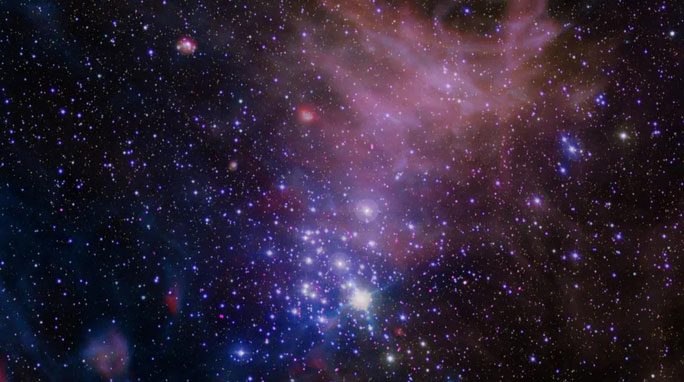The stunning images of the star cluster NGC 3293 captured by NASA’s telescopes actually conceal many beautiful yet ruthless “planetary killers.”
According to Space, “planetary killers” can sometimes resemble our own Sun.
These are massive stars like our mother star but much younger, engaging in unimaginable behaviors: blasting away the atmospheres of surrounding planets before life has a chance to take root, or even disrupting protoplanetary disks entirely, preventing planets from forming at all.

NGC 3293 dazzling may contain many “planetary killers” – (Photo: NASA).
NASA scientists believe that many stars with strong magnetic activity may have acted as “killers,” destroying planets, at least during their early life stages. This could explain why planets are often several hundred million years younger than their parent stars.
To investigate this idea, they utilized the Chandra X-ray Observatory to re-examine the NGC 3293 star cluster along with nearly a dozen other brilliant star clusters previously recorded by the Hubble Space Telescope (co-operated with the European Space Agency ESA) years ago.
In total, these bright star clusters contain over 6,000 young stars that formed around the same time, only 7 to 25 million years ago. They were compared to even younger stars previously recorded by Chandra, around 500,000 years old.
These stars are all of a type that emits a powerful source of X-rays generated by intense magnetic fields, originating from the explosive core of a newly formed star.
They created a chart showing that stars of different ages emit different levels of X-rays, indicating that their magnetic fields change rapidly with age. The more massive the star, the faster its magnetic field diminishes.
The rapid decline of magnetic fields is a fortunate occurrence. For NGC 3293 in the image released by NASA in December 2022, the sufficiently aged stars tend to emit just enough magnetic field to create a “calm” environment around them, while particularly young stars continuously emit X-ray and ultraviolet radiation.
However, this radiation is sufficient to strip away gas and dust from the early-forming accretion disks around them, thereby hindering the development of planets while they are still young.
If a planet is “unlucky” enough to form early while the star is still a hostile “planetary killer,” its atmosphere will be stripped away unless it possesses a strong magnetic field to fight back, as is the case with our Earth.
This discovery once again illustrates that the universe is a hostile environment, and for a planet to emerge in a manner similar to Earth—peaceful and suitable for life, with a thick atmosphere protecting against cosmic rays—is a rare stroke of luck.


















































